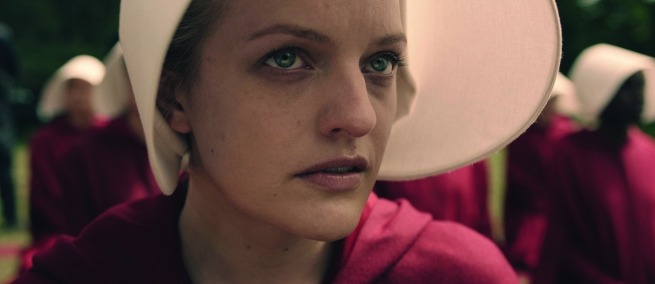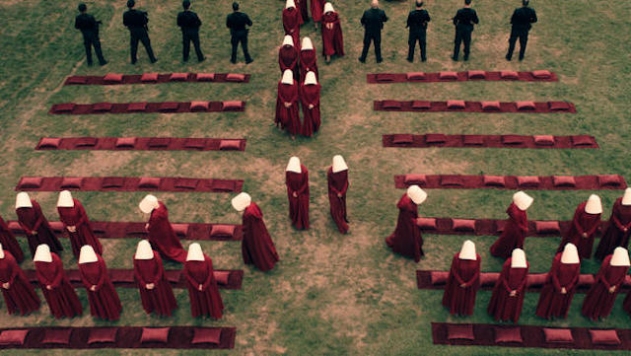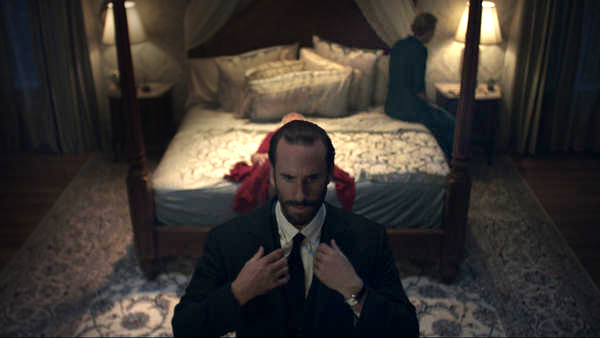
The Handmaid’s Tale, Margaret Atwood’s 1986 speculative fiction novel, takes place in a world where an undisclosed environmental trauma has led to infertility amongst most women and implicitly amongst most men as well. The society is controlled by a totalitarian regime, which holds regular public hangings. Women who can still give birth are gathered to be Handmaids, assigned to couples in order to birth and then give away their child. Atwood wrote on March 10 of 2017 in The New York Times that she did not “put any events into the book that had not already happened in what James Joyce called the ‘nightmare’ of history, nor any technology not already available.” The Handmaid’s Tale was adapted in 1990 by Harold Pinter into a film directed by Volker Schlondorff, and starring Natasha Richardson, Faye Dunaway, and Robert Duvall. In 2017, the story will return as a ten-part series on Hulu starring Elisabeth Moss in Natasha Richardson’s role as Offred.

Something as obvious as a nuclear explosion or as insidious as pollutants can cause infertility and birth defects. Pesticides and herbicides can easily contaminate food and coalesce in water systems. Atwood’s research for The Handmaid’s Tale included a New York Times article published in 1985 by Philip Shabecoff about toxic chemicals leaking into the air. At the time, the government was under pressure to expand the list of toxic chemicals to include over one hundred more which had been shown by chemical companies themselves to have deleterious effects on health. Expanding the list would allow the government to establish stricter regulatory controls on industry.
In March of 2017, the Environmental Protection Agency (EPA) under Scott Pruitt reversed the previous administration’s ban on chlorpyrifos insecticides (in use since ’65). Sold by Dow Chemical, chlorpyrifos kill pests which can be harmful to crops–but there are dietary risks that result from its use. It has been proven to cause developmental harm to children (most susceptible because of lower body mass), and to workers dispersing the chemical. The chemical can also affect fetal development when a pregnant woman is exposed. Most commonly, it is used on corn crops, as well as on almonds, and is also widely used on golf courses.
Rachel Carson was one of the first people to publicly make the connection between pesticides and environmental degradation, and raised the probability of health problems not yet observed. Her writing, most famously Silent Spring (1962), led to the establishment of the President’s Scientific Advisory Committee under JFK which became the President's Council of Advisors on Science and Technology (PCAST) under the first Bush administration. Not incidentally, under the current administration there is no web presence for PCAST.
In addition to environmental trauma, The Handmaid’s Tale is a story of psychological trauma. Offred (Moss) is a handmaid ordered to conceive a child with the staff guard because Joseph Fiennes, who plays the husband, is infertile. In the film, this is apparently often the case but the regime lays responsibility completely on women and never requires men to be tested.

Atwood wrote her book in first-person, told from the perspective of Offred. Atwood writes in the Times, “Offred records her story as best she can; then she hides it, trusting that it may be discovered later, by someone who is free to understand it and share it.” She continues, “this is an act of hope: Every recorded story implies a future reader. Robinson Crusoe keeps a journal. So did Samuel Pepys, in which he chronicled the Great Fire of London. So did many who lived during the Black Death, although their accounts often stop abruptly. So did Roméo Dallaire, who chronicled both the Rwandan genocide and the world’s indifference to it. So did Anne Frank, hidden in her secret annex.”
THE HANDMAID’S TALE will premiere at the Tribeca Film Festival on April 21, followed by a conversation with the cast. The series will be available to stream on Hulu beginning April 26. For more, go to Science & Film’s coverage of a conversation between Margaret Atwood and Science Friday host Ira Flatow. Stay tuned to Science & Film for coverage of the premiere.